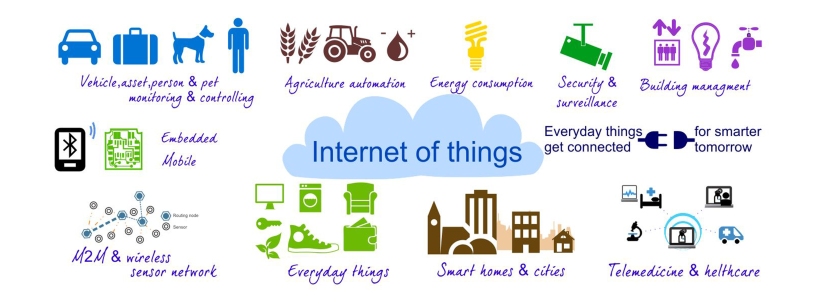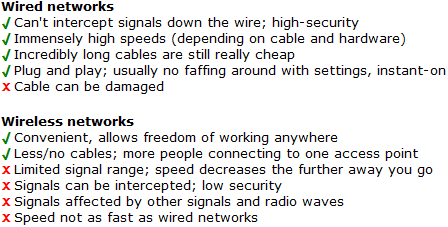What is this “Thing” i keep hearing about about so much?
Well in the English language nouns consists of Name, Place, Animal or Thing. Hence anything which is not a Name, Place or Animal, is definitely a Thing (ENGLISH 101). But the fact remains you aren’t reading this blog post to learn English (I’m assuming, if you are stop here 😉 ) and you are here to understand what is this “Thing”?, why is it important?, and how do we make it?, in context to the phrase “Internet of Things”.
So lets tackle each question one at a time so that by the end of this you can get a head start in understanding the phrase and idea behind the Internet of Things.
There are four main system components for the Internet of Things(IoT)
1>The Thing
2>The local network.
3>The Internet
4>The cloud
IoT is not complicated in conception, but it is complex in its execution.What is important to understand is that even if new hardware and software are still under development, we already have all the tools we need now to start making IoT a reality. In this blog post we’ll only cover the “Thing” the rest will be covered in future blogs so keep an eye on this page.
So this brings us to our first question
What is the “Thing”?
Img Source: datasciencebe.com
Thing is an embedded computing device (or embedded system) that transmits and receives information over a network (need not be able to interface with internet directly) for the purpose of controlling another device or interacting with a user. A Thing is also a microcontroller—or microprocessor-based device.
Hence a simple chair, tv , fan , microwave , fridge, sprinkler, bulb etc, (the list goes on) on their own cannot be called “Things”. Why you ask ?
1) Most of day to day things do not have any embedded systems E.g.: bed , chair, fan, bulb.
2) Even if they do have embedded systems built in, they do not have the capabilities too transmit and receive information over a network. E.g. washing machine, microwave, electric stoves.
Okay… So now you may ask what is this “Thing” supposed to do?
The “Thing” may provide
1>Identification and info storage(RFID tags, MAC address)
2>Information collection (Sensor networks, store sensor values)
3>Information processing(Understanding commands, filtering data)
4>Communications (Transmit and receive messages)
5>Actuation (Switch control, motor control)
Hence for anything to become a “Thing” in IoT we need to add the one or all of the above features to day to day things externally or have them inbuilt. That means you have to add an embedded device to say a chair, window, ceiling fan or bulb for them to have the above mentioned capabilities. Some systems which already have the above features are smart TV’s , all smart phones, smart thermostats etc.
Hopefully this has answered your first question.
Now lets tackle the next one…
Why are these “Things” important?
Well when you say “Internet of Things” obviously the “Thing” plays a major role in this concept. So much so that the world is looking to widely adopt IPv6 protocol especially to address the things. It is estimated that by 2020 20 Billion things will come online i.e. be interconnected via the world wide web. But the fact still remains that the ideology “one size fits all” cannot be implemented for the things, the simple reason being is each “Thing” will have to be designed as per requirements of the specific application and such an approach will not be cost- or performance-optimized enough to satisfy the needs of this market. Hence to minimize costs and optimize throughput the “Thing” becomes of utmost importance because of their sheer staggering numbers.
Finally lets look at…
How do we make these “Things”?
One understanding we have to come to before we go forward is that the “Thing” has to have either a microcontroller or microprocessor.
So first we have to choose the Microcontroller (cost and power considerations beyond scope of this simple blog) .
Factors to consider in selection.
1) Memory size.
2) Number of General Purpose input output pins.
3) Peripheral communication (SPI, I2C, USART)
4) Communication capabilities (Wired E.g,: Ethernet , Wireless E.g.: Wifi, Blutooth, Zigbee, IR etc)
All above components can be present on a single chip or can be externally interfaced to a microprocessor.
A Typical System on Chip SOC
Img Source: electronicdesign.com
Once the microcontroller is selected , the next thing to look at is the type of SENSOR you want to use.
Again selection of sensor is purely application specific. All we need to research here is as to what real life quantity we need to measure E.g: light, sound, pressure, gas, etc. and find a device that can convert it into an electrical signal (current or voltage) which can either digital or analog. If the signal is analog then your embedded system will always need a Analog to digital converter .
There are already a myriad amount of sensor available today with a bit of research needs to be done to successfully interface them with your microcontroller.
Img Source: meetup.com
Another important thing to consider is sensor sensitivity and power consumed.
Ok sometimes we may not only need the”Thing” to pass us environmental information, but we may also want it to control its physical environment.
Here we need some form of ACTUATORS.
Again while selecting each are application specific. These include motors, relays, switches, valves etc.
Finally after we have finalized and settled with the above components we need to now look at how these “Things” can COMMUNICATE.
Now they can have on board wired or wireless communication capabilities or can have added modules which do the communication process on their command (E.g: Bluetooth or WiFi dongles).
I won’t stress here much on communication technologies or protocols, what i will do is give you a short comparison between wired and wireless communication. The use of which is again purely application specific.
Once all of the above have been accounted for you can very well have your own local IoT setup. But you wont be able to control it or access it over the internet you always have to be in range or on the same local network on which your modified “Things” are present on.
Hence at last we come to the INTERNET part…
To be able to available on the internet the things will require the following capabilities.
Fully Capable Thing
- With MCU(Microcontroller Unit) and Network (Each thing can directly connect to the internet)
- The IOT application can run on the device (E.g. Smart Thermostat)
Constrained Capability
- Only MCU (Need to connect to a network which will then connect it to the Internet)
- No MCU (sensors send data smart hub which does processing, but can connect to the internet)
- With networking (Each thing can communicate to each other , but will still require an external device to connect to the internet)
- No networking (need to go through a hub which provides networking)
- The IOT application runs as a web app on the cloud, or cloud connected dedicated server
So in conclusion you need to have knowledge of embedded systems and networking to get you kick-started with IoT.
But DIY kits like Beagle-Bone , Raspberry Pi helps speed the learning process up tremendously. For more examples of avaible DIY kits visit http://postscapes.com/internet-of-things-hardware
Thanks for reading 🙂
This post was written for Inventrom by Dattaprasad Naik. Datta has been working with Inventrom since 2013 and leads Learn, the department involved in training and workshops. Follow Datta on twitter via @datta_TECH






Great blog… Got to know the basics of IOT… See if you can write more about the different types of sensors and actuators…
Thanks Upendra. We shall surely write about sensors soon.
HI Dutta,
I am working in a hardware and embedded systems company and willing to learn how IoT works and the related hardware that you have discussed in one of the blog submission.
How can I connect you or join you to learn the working of hardware and communication with the internet?
Hi Sagar ! We regularly conduct workshops on IoT. You could attend one of them. We have a workshop coming up in Banglore in July. Please drop us an E-Mail on contacts@inventrom.com or ryan.dcosta@inventrom.com and we shall share further details.